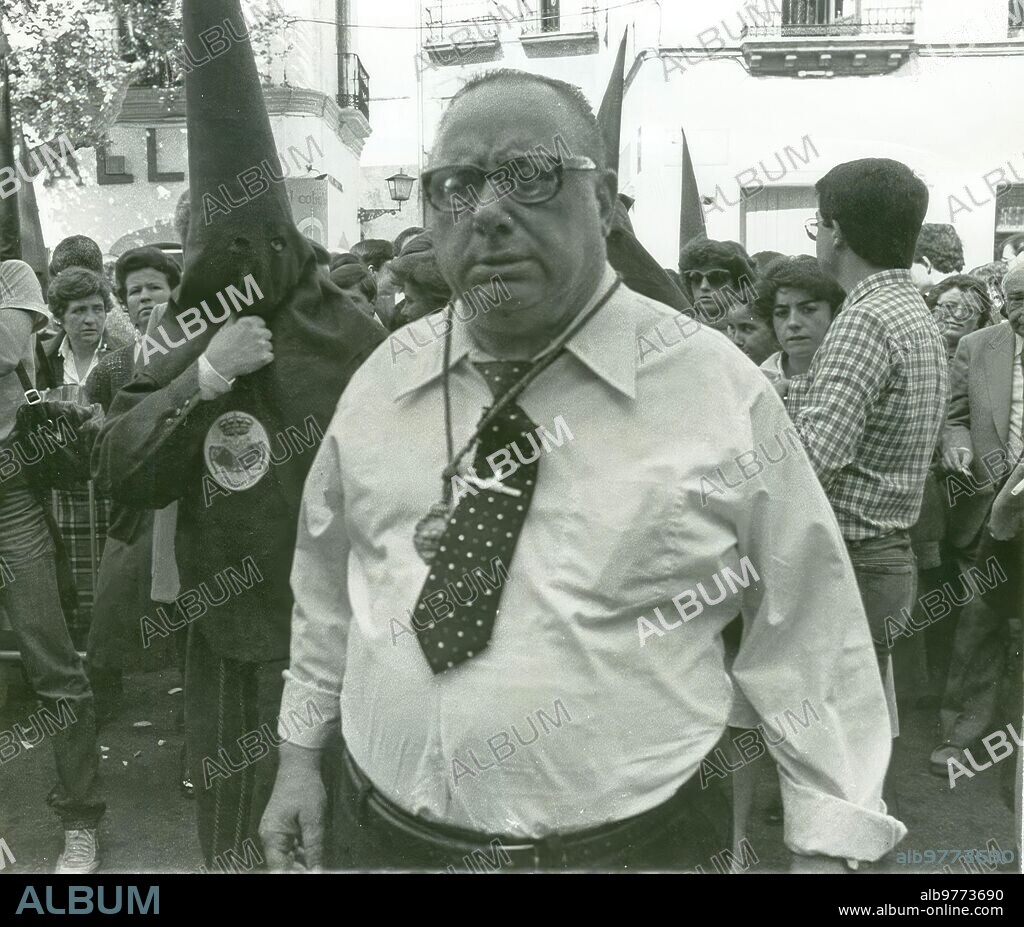alb9773690
Francisco Palacios Ortega «El Pali» (Sevilla, 1928-1988) fue un popularísimo...

|
Ajouter à une autre Lightbox |
|
Ajouter à une autre Lightbox |



Avez-vous déjà un compte? S'identifier
Vous n'avez pas de compte ? S'inscrire
Acheter cette image.
Sélectionnez l'usage:

Titre:
Francisco Palacios Ortega «El Pali» (Sevilla, 1928-1988) fue un popularísimo...
Légende:
Traduction automatique: Retable d'Esperanza.- Francisco Palacios Ortega "El Pali" (Séville, 1928-1988) était un chanteur sévillan très populaire également connu sous le nom de "El Trovador de Sevilla", surnom que lui a donné l'écrivain Antonio Burgos. Il forme une compagnie artistique dans les années 50 et 60 avec Miguel de la Isla et Manolito Rubio, les guitaristes Gutiérrez, El Gran Simón et Paco Gandía. Plus tard, avec Miguel de la Isla et Joaquín de Paradas, il forme le groupe « Los Rocieros del Quema », qui popularise les sévillanes de « Las cigarreras ». En 1974, il continue en solo. Leurs sévillanes étaient un véritable coup de grâce pour leur saveur nostalgique d'une Séville révolue. Il obtient de nombreux succès. Le surnom « El Pali » est un acronyme de « El Palillo », qui lui a été donné en raison de sa maigreur pendant sa jeunesse. Sur l'image, prise en décembre 1979, devant le retable dédié à la Vierge de l'Espérance de Triana, l'œuvre d'Antonio Kiernann, dans le bâtiment qui a remplacé l'ancienne prison de Pópulo, où les prisonniers chantaient des saetas à la Sainte Vierge le matin du Vendredi Saint. (Photo Sanvicente)
Esperanza Altarpiece.- Francisco Palacios Ortega "El Pali" (Seville, 1928-1988) was a very popular sevillanas singer also known as "El Trovador de Sevilla", a nickname given to him by the writer Antonio Burgos. He formed an artistic company in the 50s and 60s with Miguel de la Isla and Manolito Rubio, guitarists the Gutiérrez, El Gran Simón and Paco Gandía. Later, together with Miguel de la Isla and Joaquín de Paradas he formed the group ?Los Rocieros del Quema?, which popularized the sevillanas of ?Las cigarreras?. In 1974 he continued solo. Their sevillanas were a real knockout for their nostalgic flavor of a bygone Seville. He obtained numerous successes. The nickname "El Pali" is an acronym for "El Palillo", which they gave him due to his thinness during his youth. In the image, captured in December 1979, in front of the altarpiece dedicated to the Virgin of Hope of Triana, the work of Antonio Kiernann, in the building that replaced the old Pópulo prison, where the prisoners sang saetas to the Holy Virgin in the morning of Good Friday. (Photo Sanvicente)
Personnalités:
Date de l'événement:
19/03/1983
Emplacement:
EUROPE (CONTINENT) • ANDALOUSIE • Sevilla (Provincia) • Seville
Pays:
ESPAGNE
Photographe:
Sanvicente
Crédit:
Album / Archivo ABC / Sanvicente
Autorisations:
Taille de l'image:
3210 x 2739 px | 25.2 MB
Taille d'impression:
27.2 x 23.2 cm | 10.7 x 9.1 in (300 dpi)
Mots clés:
 Pinterest
Pinterest Twitter
Twitter Facebook
Facebook Copier le lien
Copier le lien Email
Email
